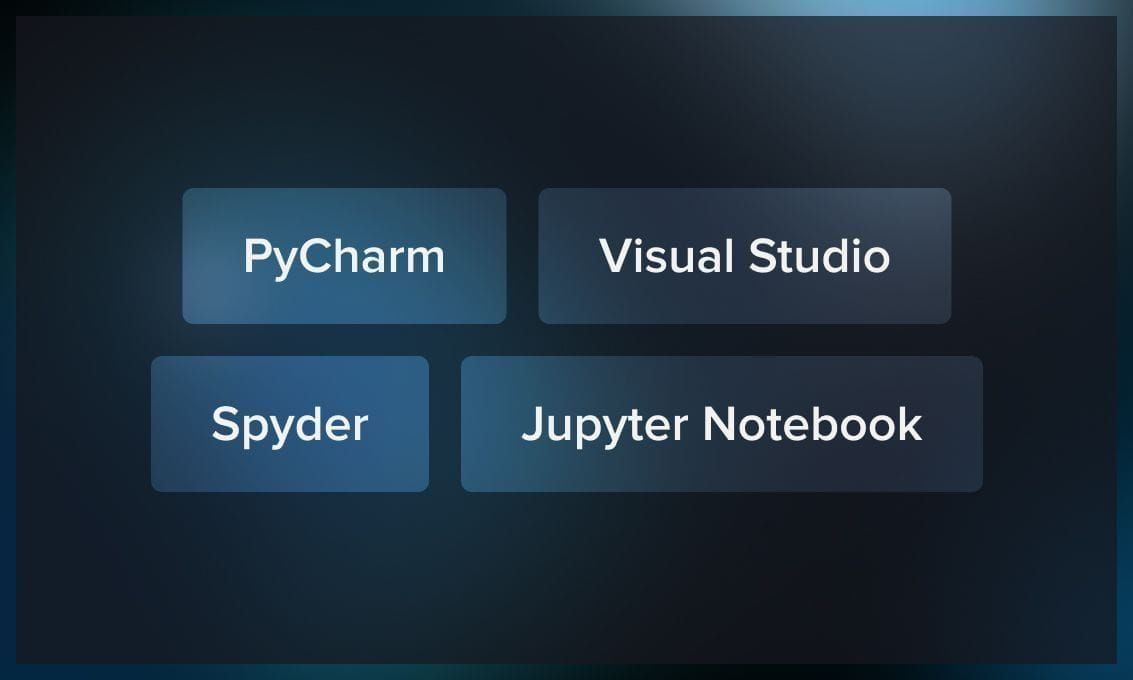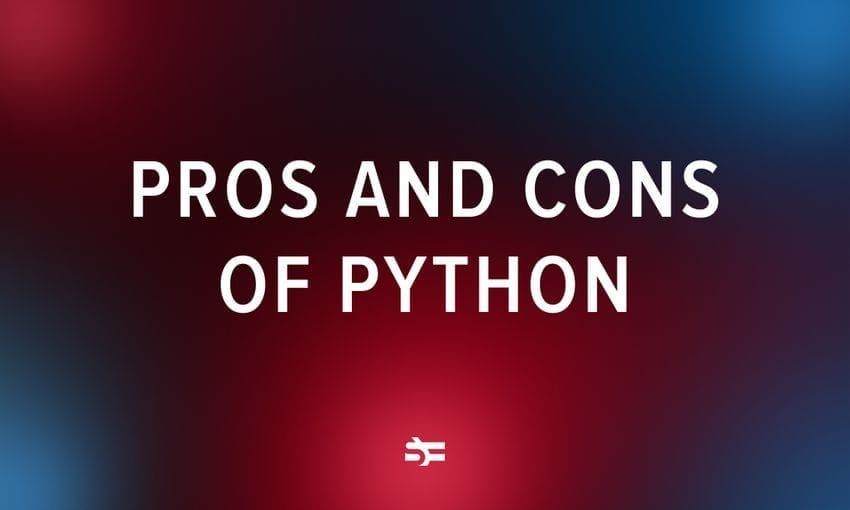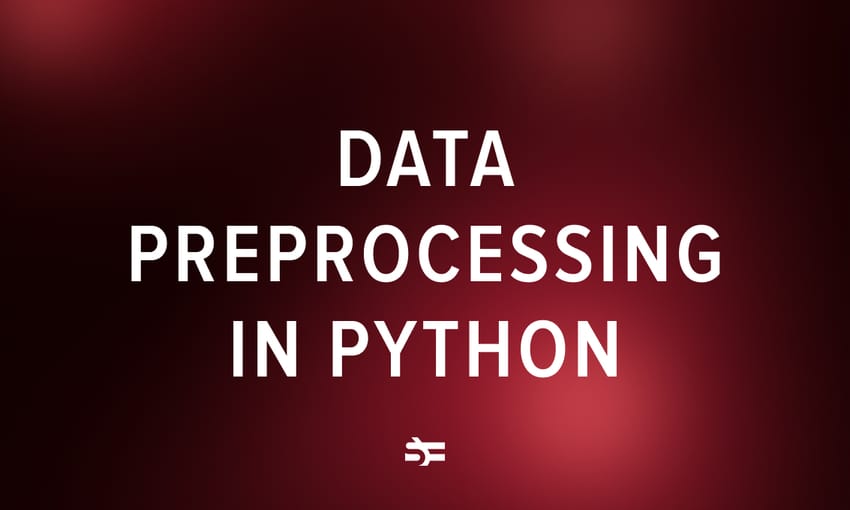If you write in Python, you need to use an IDE, which provides your with a platform for writing, debugging, and executing code. Today there are several IDEs that you can use, both commercial and open-source ones. The only problem is to choose the right one.
In this article, we will discuss the top Python IDEs, as well as the factors to consider when choosing the best IDE for your needs.
What is an IDE?
An IDE (Integrated Development Environment) is a software program that helps programmers write and manage their code. They are commonly used in programming languages like Python, Java, and C++.
However, in Python, you can easily write a program without an IDE, using just code editors instead. Many programmers rely on code editors and just apply external tools, for example, for debugging, if they need additional help.
The difference between a code editor and an IDE is that the tools for code completion, code folding, refactoring support, and debugging are already integrated in one place. Moreover, IDEs have compilers, as Python is a compiled language. Having all the tools in one place can help you write better code faster and be more productive at your job.
Why is it important to choose the right IDE?
As we mentioned, a good IDE can help you be more efficient, for example, suggest code completion, provide syntax highlighting and help with debugging tools. Moreover, most modern IDEs also have an in-built AI assistant (aka Copilot) that can search for mistakes in your code and correct them or provide you with suggestions for more efficient code. Some examples are PyCharm, IDLE, and Android studio.
Moreover, when choosing an IDE you also have to think about compatibility, especially if you work on a project that combines multiple programming languages and frameworks. IDEs are commonly used on large-scale projects that require multiple technologies to be used together.
Finally, IDEs differ in terms of ease of use. An IDE that is intuitive to use can help you get started quickly and reduce the learning curve. This can be especially important if you are new to programming or working with a new language or framework.
Top Python IDEs

There are several popular IDEs that developers often use.
PyCharm
PyCharm by JetBrains is a popular Python IDE. It provides functionality for code completion, debugging, testing, and version control integration. It has a user-friendly interface and supports multiple operating systems.
One of the benefits of PyCharm is that it suggests code completions based on the context. This feature saves time and reduces errors in coding. Moreover, it helps programmers to identify and fix errors in their code quickly. It also has an integrated test runner that makes it easy to run unit and integration tests.
PyCharm’s version control integration with Git allows developers to manage their code changes and collaborate with team members efficiently. It also supports virtual environments, making it easy to manage dependencies for different projects.
The Professional Edition of PyCharm is also relatively expensive, starting at $199/year. However, there is a free Community Edition available for those who do not require all the features of the Professional Edition.
Visual Studio
Visual Studio was made by Microsoft. Functionality-wise it is quite similar to PyCharm but has a much bigger library of extensions that can be downloaded to enhance its functionality. These extensions include support for different programming languages, themes, and debugging tools. It also has an integration with Git’s AI-coding tool Copilot, which saves time on writing code and debugging.
Visual Studio is more lightweight than PyCharm and has a great support for TypeScript and JavaScript.
Spyder
Spyder is an open-source IDE that can be used for many different tasks but specifically, for scientific computing and data analysis. It researchers, scientists, and developers who work with Python process and analyze data more efficiently.
One of the benefits of Spyder is its focus on scientific computing. It provides a range of tools and libraries that are specifically designed for data analysis and visualization. This makes it easier for users to work with large datasets and complex algorithms. Spyder also has a user-friendly interface that allows users to easily navigate their projects and view their data in different ways.
Another benefit of Spyder is its integration with other tools and libraries. It supports a range of popular libraries such as NumPy, Pandas, and Matplotlib, which makes it easier for users to work with these tools directly within Spyder. It also has built-in support for version control systems such as Git, which makes it easier for users to collaborate with others on their projects.
However, one of the weaker points of Spyder is its limited support for languages other than Python. While Spyder is designed specifically for Python development, it may not be suitable for users who need to work with other programming languages. It is also slower than other IDEs when working with large datasets.
Jupyter Notebook
Jupyter Notebook is another open-source IDE used in scientific computing and data analysis.
One of the key features of Jupyter Notebook is its support for interactive computing. It allows users to write and execute code in real-time, which makes it easier to explore data and experiment with different algorithms. Jupyter Notebook also supports Markdown, which allows users to create rich text documents that can include images, equations, and other types of media.
Another benefit of Jupyter Notebook is its flexibility. It supports a range of programming languages such as Python, R, and Julia. Jupyter Notebook also has built-in support for popular libraries such as NumPy, Pandas, and Matplotlib.
One of the weaker points of Jupyter Notebook is its lack of support for debugging. While it does provide some basic debugging tools, it may not be suitable for users who need more advanced debugging features.
Factors to consider when choosing a Python IDE
When selecting an IDE, you should consider several factors.
What kind of project do you work on?
The choice of IDE depends on what kind of program you’re building. For example, if you’re making a desktop application, it will be important for you that your IDE has some Visual UI Design capabilities or provides data binding of UI components. If you’re a machine learner, you may need python notebooks, so Jupyter Notebook or Visual Studio might be the way to go.
Moreover, IDEs can be commercial and open-source. Open-source ones might have less features or less integration with required services, but are free to use, unlike commercial IDEs.
Compatibility with your operating system
Obvious one: you should consider the compatibility with your operating system when choosing a Python IDE. Some IDEs are designed specifically for Windows, while others are made for Linux or macOS. Make sure that the IDE you choose is compatible with your operating system, so you can use it without any issues.
Ease of use and user interface
A good Python IDE has a clean and intuitive interface that makes it easy to navigate and use. It should also have features like code completion, syntax highlighting, and auto-indentation to make coding easier and more efficient.
Debugging and testing capabilities
Debugging and testing capabilities are useful for many projects. A good IDE should have built-in debugging tools that allow you to step through your code and identify errors and bugs. It should also have testing frameworks that make it easy to write and run tests for your code.
Integration with other tools and libraries
You should check the integration of the IDE with other tools and libraries. An IDE should integrate with version control systems like Git and SVN, as well as popular Python libraries like NumPy, SciPy, and Pandas. This will make it easier for you to work with these tools and libraries without having to switch between different applications.
Conclusion
In this article, we’ve discussed how to choose the right IDE for your Python project. Some of the options that we can recommend include PyCharm, Visual Studio, Spyder, and Jypiter Notebook. These IDEs are efficient, lightweight and have a great reputation in the community.
Now you know everything about how to choose the right IDE for your project in Python and what options are available on the market. If you want to learn more about programming in Python, you can check out this article in our blog:







.jpg)
.jpg)